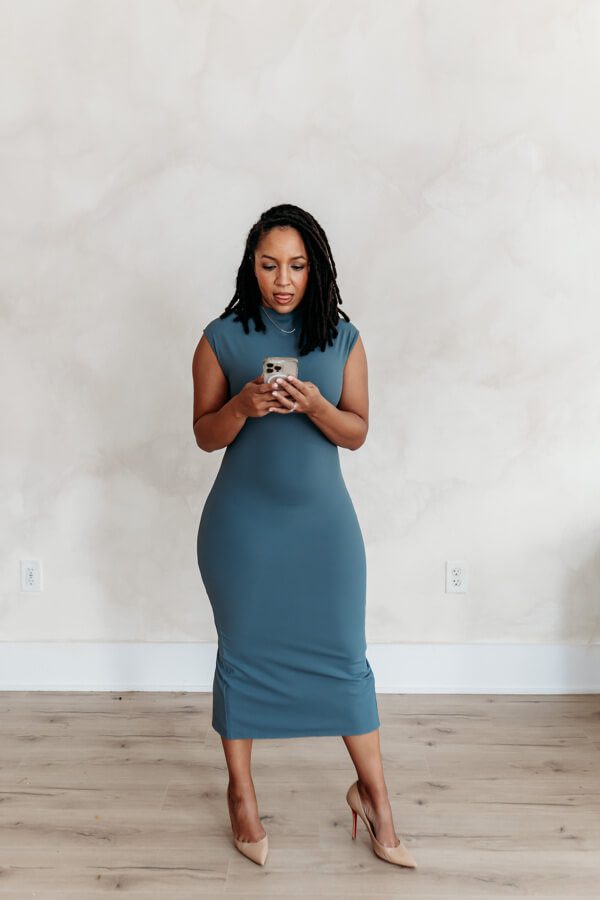Posting Feeling Pointless?
If your engagement has been low, if posting is starting to feel pointless, if you’re wondering why your content feels invisible—you’re not alone. But here’s the truth: posting isn’t pointless. Flat engagement doesn’t mean your business is failing. And it definitely doesn’t mean your audience doesn’t care.
The real fix? Stop trying to be seen—and start making people feel. Because that’s the difference between posts that get scrolled past… and posts that spark DMs, conversations, and sales. Today, I’m breaking down the five types of content that don’t just boost your numbers—they create connection that converts.
Hey, it’s Kary Perry—brand strategist, business coach, and your permission slip to stop chasing likes and finally create content that makes people feel, engage, and buy.
Just the other day, I was scrolling Threads and saw someone say, “Posting on Instagram is starting to feel pointless.” Hundreds of people agreed—and honestly? I get it. Especially since coming back after my 10-month break, my own engagement hasn’t been what it used to be. My likes are down. My comments are fewer. But here’s the thing: I know how to rebuild it. Because the same strategies that once helped me grow to 10,000 followers in 10 weeks and generate $183K in sales still work. They worked while I was away. And they’re working now as I lean back into them.
And here’s the twist—while my “numbers” may be lower, my posts are generating more DMs than ever. In fact, just recently, I shared something short and real—not polished, not perfectly branded, just me sharing my opinion and a piece of my story. Within hours, someone messaged me: “Hey, I’ve been bingeing your posts. How can I work with you?” Twenty-four hours later, they were a client.
That’s when it hit me: likes are nice, comments are fine—but real engagement is when someone takes the next step closer to you. When your words make them feel something so strongly they stop lurking, reach out, and invest. Because people don’t engage out of obligation. They engage when they’re emotionally activated—when your story sparks recognition, when your honesty creates empathy, when your content makes them pause and think, “Wow, that’s me.”
So if you’ve been showing up, posting, and wondering why no one seems to care—this is your reminder: your audience isn’t waiting for more posts. They’re waiting to feel you.
Let’s get into it. Here are the five types of content that create engagement that actually matters.
Content Type #1: Transparent Content
Transparency is showing the real picture—not just the curated one. People’s brains are constantly scanning for what feels safe and trustworthy. When all they see is polished, perfect content, it actually creates distance—they feel like you’re hiding something.
But when you show them what’s real, you trigger relief. Relief lowers resistance, and that opens the door for connection. One of my students had been posting only polished carousels. Pretty? Yes. Memorable? No. Then one day she posted her messy desk, toys everywhere, and her coffee spilled on her notes. That post got triple the engagement, because her audience finally thought, “She’s like me. I can trust her.”
✨ YOUR ACTION STEP:
Post one honest behind-the-scenes this week. It could be your messy desk, a launch you’re still figuring out, or the not-so-glamorous truth about how you get things done. Watch how people lean in once they see you as real, not perfect.
Content Type #2: Vulnerable Content
Vulnerability is sharing the struggle, not just the solution. When you admit your struggles, you give your audience permission to admit theirs. And when they feel safe to admit, they comment. They DM. They connect. Vulnerability turns your post from a broadcast into a conversation.
I kept my bathroom-floor story hidden for years, thinking it would make me look weak. But the day I shared it? My inbox filled with messages like, “Thank you—I thought I was the only one.” That single post built more depth with my audience than any “look at my win” ever could.
✨ YOUR ACTION STEP:
Think of one story you’ve been avoiding because it feels too messy. Write about it without trying to tie it in a neat bow. Vulnerability doesn’t weaken your authority—it deepens it. And it makes your audience feel close enough to actually respond.
Content Type #3: Story-Driven Content
Storytelling is how people remember you. The human brain doesn’t latch onto data points—it latches onto narrative. That’s why we can recite movie lines we heard 10 years ago but forget a fact we read yesterday. Stories light up more parts of the brain than straight information, which means people remember them—and remember you.
One of my clients was stuck in “tips mode”—endless educational posts that no one engaged with. When she shifted those tips into story form—like telling about the time she froze in front of her first client meeting—her engagement doubled. Same lesson, different delivery. The story made people feel it, not just read it.
✨ YOUR ACTION STEP:
Take one tip you’d normally post as bullet points and tell the story behind it instead. Share the moment you learned it, the mistake you made, or the client who lived it. People may forget your advice—but they’ll remember your story.
Content Type #4: Motivational Content
Motivational content works when it’s rooted in truth. When people see evidence that someone like them overcame something hard, it shifts their belief in what’s possible for themselves. That belief creates energy—and energy sparks action.
When I shared that my only follower used to be my mom, people didn’t just like the post. They messaged me saying, “If you started there and built this, I can too.”
That one story motivated them not because it was flashy, but because it was believable. One of my students did the same—she wrote about almost quitting after three months of no sales, then signing five clients the next month. That story got more shares than anything else she’d posted, because it moved people from doubt to possibility.
✨ YOUR ACTION STEP:
Share one win this week—but tell the backstory too. Don’t just say you signed a client. Share the rejection that came before, the doubt you felt, and the moment you almost quit. That’s the difference between empty inspiration and motivation that moves people.
Content Type #5: Controversial Content
This works because people are hardwired to notice tension. When you say something that challenges their belief, their brain pays attention. Even if they disagree, they’re more likely to comment, share, or DM you—because you woke them up.
I once posted, “Why the Algorithm Hates You.” Half the comments were cheering me on. Half were debating me. But that post outperformed almost everything else that month, because it sparked emotion and thought.
One of my clients, a wellness coach, posted: “You don’t need a daily workout routine to be healthy.” Half her audience clapped back with, “But discipline is everything!” The other half messaged her saying, “Thank you—I’ve been waiting for someone to say this.” That one post didn’t just get her likes—it filled her DMs with conversations that led to new clients.
✨ YOUR ACTION STEP:
Take one belief you hold that goes against the grain in your industry. Say it with confidence. Let people have opinions. The goal isn’t to be liked by everyone—it’s to be remembered by the right ones.
Final Thoughts: Let’s Pull It Together
So let’s pull this together. Transparency builds trust. Vulnerability builds connection. Storytelling makes you memorable. Motivation inspires belief. And controversy sparks conversation. If you want more engagement, stop chasing trending audios and start making people feel something. That’s how you move your audience from silent to engaged.
And if you’re ready to master this, I want you to join me for my free Content That Works Workshop.
Inside, I’ll teach you the three secrets to creating a binge-worthy feed that doesn’t just get likes—but gets customers, clients, and brand partners. You’ll learn how to weave these types of content together into a strategy that feels natural, aligned, and magnetic.
You can grab your spot at karyperry.com/content-workshop. Don’t wait—the longer you stay stuck in low engagement, the longer your audience stays silent. Let’s fix that now.
Because the truth is this: your people want to engage with you. You just have to give them something worth leaning into.
Your Coach,
Kary ♡






